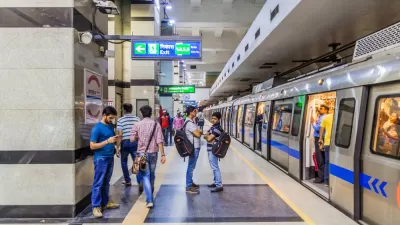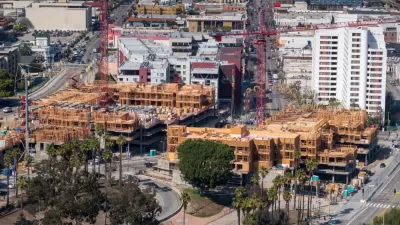According to the latest figures from the U.S. Census 2013 American Community Survey (ACS), Americans continue to move into cities en masse over suburbs, but certain cities are attracting larger crowds than others.
Greg Toppo and Paul Overberg took apart the ACS numbers as they related to population growth in cities and suburbs in a recent article in USA Today. They found some unprecedented growth in certain historically smaller cities, such as San Jose, California, which "is poised to crack the million-resident milestone for the first time. It is the 10th-largest city, surpassing its neighbor San Francisco, as well as places like Austin, Indianapolis and Jacksonville." In addition, Toppo and Overberg found that modest growth was also sustained throughout Sun Belt cities, which were booming before the recession hit.
Other cities, like slow-growing Boston, "saw its overall ranking drop sharply last year as three cities — Seattle, Denver and Washington — crept past it. The trio charged ahead with above-average growth rates topping 2%, the figures show. Overall, the USA grew at a rate of just 0.7%, the lowest since just after the Great Depression. By contrast, Seattle last year grew 2.8%."
However, some cities are still seeing falling populations backed by the ACS data, supporting trends associated with post-industrial economies, such as Baltimore. As Toppo and Overberg write, "Baltimore, once among the most populous cities in the USA, is seeing little to no growth and has lost 4.2% of its population since 2000. If current trends continue, Baltimore will be surpassed next year by Oklahoma City, which is riding an oil and natural gas drilling boom."
FULL STORY: In latest U.S. Census figures, cities continue growing

Study: Maui’s Plan to Convert Vacation Rentals to Long-Term Housing Could Cause Nearly $1 Billion Economic Loss
The plan would reduce visitor accommodation by 25,% resulting in 1,900 jobs lost.

North Texas Transit Leaders Tout Benefits of TOD for Growing Region
At a summit focused on transit-oriented development, policymakers discussed how North Texas’ expanded light rail system can serve as a tool for economic growth.

Why Should We Subsidize Public Transportation?
Many public transit agencies face financial stress due to rising costs, declining fare revenue, and declining subsidies. Transit advocates must provide a strong business case for increasing public transit funding.

How to Make US Trains Faster
Changes to boarding platforms and a switch to electric trains could improve U.S. passenger rail service without the added cost of high-speed rail.

Columbia’s Revitalized ‘Loop’ Is a Hub for Local Entrepreneurs
A focus on small businesses is helping a commercial corridor in Columbia, Missouri thrive.

Invasive Insect Threatens Minnesota’s Ash Forests
The Emerald Ash Borer is a rapidly spreading invasive pest threatening Minnesota’s ash trees, and homeowners are encouraged to plant diverse replacement species, avoid moving ash firewood, and monitor for signs of infestation.
Urban Design for Planners 1: Software Tools
This six-course series explores essential urban design concepts using open source software and equips planners with the tools they need to participate fully in the urban design process.
Planning for Universal Design
Learn the tools for implementing Universal Design in planning regulations.
Ascent Environmental
Borough of Carlisle
Institute for Housing and Urban Development Studies (IHS)
City of Grandview
Harvard GSD Executive Education
Toledo-Lucas County Plan Commissions
Salt Lake City
NYU Wagner Graduate School of Public Service





























